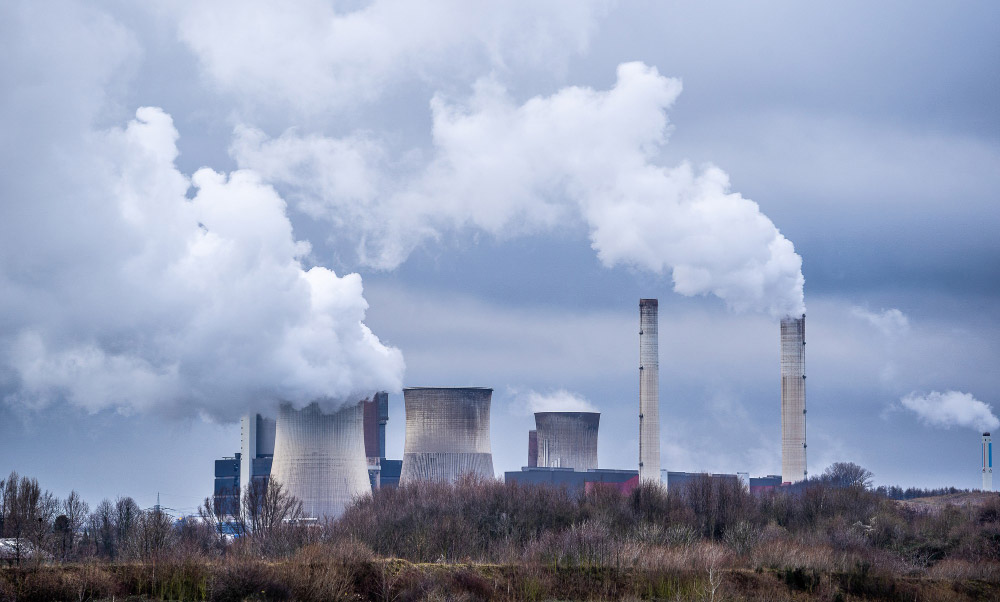
Nuclear Energy: Advantages, Disadvantages, Safety Measures, and its Role in Climate Change
Nuclear energy, also known as atomic energy or fission power, is a type of energy produced by splitting atoms to generate heat. This heat is then used to produce electricity, making nuclear energy an important source of power globally. In this article, we will explore the pros and cons of nuclear energy, safety measures in nuclear power plants, and how nuclear energy can mitigate climate change. We will also delve into the management of radioactive waste generated by nuclear power plants and compare nuclear energy with other sources of energy like renewable energy.
Definition of Nuclear Energy and How it is Produced
Nuclear energy is produced through a process called nuclear fission, where the nucleus of an atom is split into two smaller nuclei, releasing a large amount of energy in the form of heat. This heat is then used to create steam, which drives a turbine to generate electricity.
Advantages and Disadvantages of Nuclear Energy
Like any source of energy, nuclear energy has its advantages and disadvantages. One of the main advantages of nuclear energy is that it is a low-carbon energy source, making it a potential solution to mitigate climate change. Nuclear power plants do not emit greenhouse gases like carbon dioxide, which contributes to the warming of the planet.
Another advantage of nuclear energy is that it is a reliable source of power. Nuclear power plants can operate 24/7, unlike renewable energy sources like wind and solar power, which depend on weather conditions.
However, nuclear energy also has its drawbacks. One major disadvantage is the risk of accidents at nuclear power plants, which can have severe consequences for public health and the environment. The Three Mile Island accident in 1979 and the Chernobyl disaster in 1986 are two examples of nuclear accidents that resulted in the release of radioactive material.
Additionally, the management of radioactive waste generated by nuclear power plants is a major concern. Radioactive waste can remain hazardous for thousands of years and requires careful management and disposal.
Safety Measures and Precautions Taken in Nuclear Power Plants
Safety measures and precautions are taken in nuclear power plants to minimize the risk of accidents and ensure the safe operation of the plant. Some of the safety measures include:
- Multiple layers of containment to prevent the release of radioactive material in case of an accident.
- Emergency planning and response procedures in case of an accident.
- Regular inspections and maintenance of the plant to ensure that it is operating safely.
Comparison of Nuclear Energy with Other Sources of Energy like Renewable Energy
Nuclear energy is often compared with renewable energy sources like wind and solar power. While both nuclear and renewable energy sources are low-carbon energy sources, there are some key differences between the two.
One of the main differences is the reliability of the source. Nuclear power plants can operate 24/7, unlike wind and solar power, which depend on weather conditions. However, renewable energy sources have a lower risk of accidents and do not produce radioactive waste.
Role of Nuclear Energy in Mitigating Climate Change
Nuclear energy has the potential to play a significant role in mitigating climate change by reducing greenhouse gas emissions. According to the International Atomic Energy Agency, nuclear energy accounts for 10% of the world's electricity generation.
By replacing fossil fuels with nuclear energy, countries can reduce their carbon footprint and transition to a low-carbon economy. However, it is important to ensure the safe operation of nuclear power plants and the proper management of radioactive waste.
Management of Radioactive Waste Generated by Nuclear Power Plants
The management of radioactive waste generated by nuclear power plants is a major concern. Radioactive waste can remain hazardous for thousands of years and requires careful management and disposal.
One solution is to store the waste in deep geological repositories, where it can be isolated from the environment for thousands of years. For example, Sweden's "KBS-3" method involves encasing nuclear waste in copper canisters and storing them in tunnels deep beneath the ground. The safety of this method is supported by scientific research and has been approved by regulatory bodies. However, there is still public concern about the safety and long-term viability of such repositories.
Conclusion
In conclusion, nuclear energy is a complex issue with both advantages and disadvantages. While it is a low-carbon energy source that can help mitigate climate change, it also carries risks in terms of safety and radioactive waste management. It is important to continue to invest in safety measures and research to mitigate these risks and to ensure the safe and responsible use of nuclear energy.
Whether nuclear energy is a viable option for a particular country or region depends on a variety of factors, including geography, economy, and public opinion. It is important to consider all of these factors when making decisions about energy policy and to engage in open and informed public dialogue about the pros and cons of different energy sources.
As the world continues to grapple with the challenge of reducing greenhouse gas emissions and transitioning to a sustainable energy future, it is clear that there is no one-size-fits-all solution. Nuclear energy is just one piece of the puzzle, and it is up to policymakers, researchers, and individuals to work together to find the best path forward.
Energy





